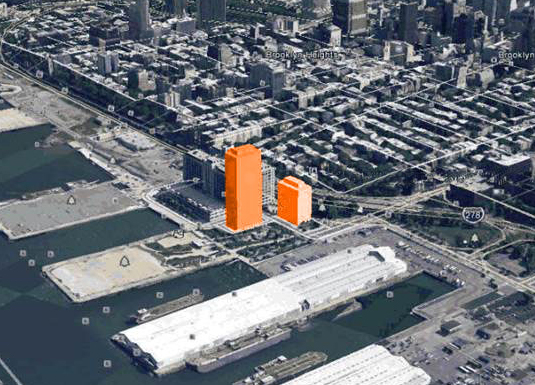Judge blocks Brooklyn Bridge Park from approving Pier 6 towers, for now
Temporary Restraining Order from Justice Knipel

A rendering shows the relative position and mass of the proposed Pier 6 towers, though not their final shape. Photo: Graphics by Save Pier 6 team, map copyright 2014 Google
A park advocacy group obtained a temporary restraining order (TRO) in state Supreme Court on Friday which prevents Brooklyn Bridge Park from signing off on two controversial residential towers planned for the park’s Pier 6.
Justice Lawrence Knipel’s decision restrains Brooklyn Bridge Park personnel from approving proposals to develop a 315 foot tower and a 155 foot tower. Together, the two towers offer approximately 430 units.
The newly-formed People for Green Space Foundation wants the Pier 6 Request for Proposals (RFP) annulled, on the grounds that the project was altered after the fact to include affordable housing.

Brooklyn Heights
View MoreRead the Brooklyn Height's Press and Cobble Hill News. Find out more about Brooklyn Height's History here.